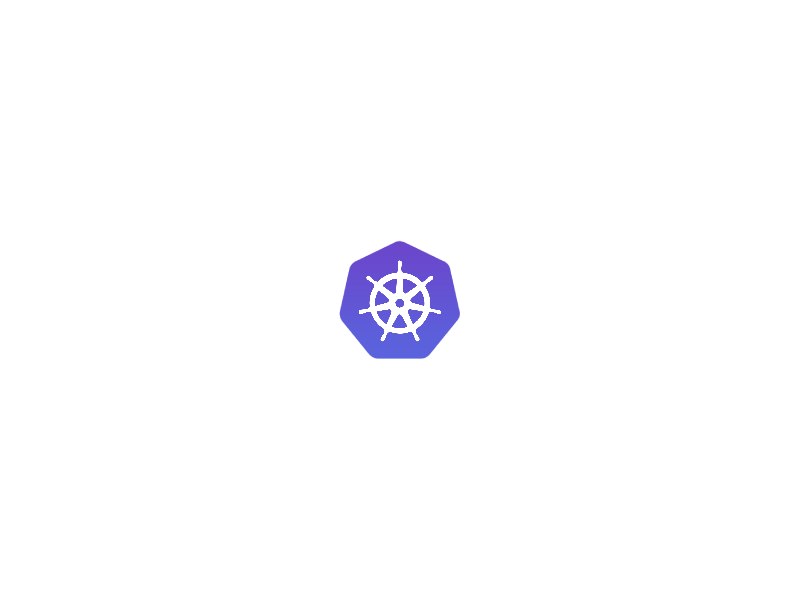Have you ever wondered how software development and IT operations work together seamlessly to deliver high-quality products? Well, that’s where DevOps comes into play. DevOps, short for Development and Operations, is a collaborative approach that combines people, processes, and tools to streamline software development and deployment.
In the traditional software development lifecycle, there used to be a gap between development teams and operations teams. Developers would build the code and then pass it on to the operations team for deployment. This handover often led to delays, miscommunication, and bottlenecks, slowing down the entire process.
DevOps aims to bridge this gap by fostering a culture of collaboration and shared responsibility. It encourages developers and operations professionals to work together right from the initial stages of development, ensuring smooth and continuous delivery of software.
One key aspect of DevOps is automation. By automating repetitive tasks such as testing, building, and deploying software, development teams can reduce manual errors and achieve faster release cycles. Automation tools like Jenkins, Ansible, and Docker are widely used in DevOps environments to automate various aspects of the software lifecycle.
Another important principle of DevOps is continuous integration and continuous deployment (CI/CD). With CI/CD, developers frequently integrate their code changes into a central repository, allowing for early detection of integration issues. Continuous deployment ensures that these changes are automatically deployed to production environments, providing a rapid feedback loop and enabling faster time-to-market.
DevOps also emphasizes monitoring and feedback loops, enabling teams to gather valuable insights about their software’s performance and user experience. By constantly monitoring applications in production, teams can quickly identify and address any issues that arise, ensuring a seamless user experience.
In summary, DevOps is a collaborative approach that brings together development and operations teams to create a more efficient software development and deployment process. By promoting automation, continuous integration, and monitoring, DevOps helps organizations deliver high-quality software faster and with fewer hiccups along the way. So, if you want to streamline your software development process and enhance your overall business agility, adopting DevOps may be the way to go.
Benefits of Implementing DevOps
Are you ready to experience a revolutionary shift in your business operations? Look no further than DevOps! In today’s fast-paced digital landscape, implementing DevOps methodology has become a game-changer for organizations worldwide. By blending development (Dev) and operations (Ops), this approach brings surprises and explosions of efficiency, collaboration, and continuous innovation. Let’s delve into the explosive benefits that await those who embrace DevOps.
First and foremost, DevOps fosters seamless collaboration among teams. By breaking down silos and promoting cross-functional communication, developers, operations staff, and other stakeholders work hand-in-hand, resulting in enhanced productivity and reduced time-to-market. No longer will you witness bottlenecks caused by miscommunication or disjointed efforts. With DevOps, surprise your organization with a collaborative environment that sparks explosive creativity and team synergy.
Furthermore, DevOps fuels efficiency like no other. By automating repetitive tasks, deploying code swiftly, and streamlining processes, businesses witness optimized workflows and accelerated delivery cycles. The explosion of efficiency translates into reduced downtime, faster recovery from failures, and efficient resource utilization. Say goodbye to tedious manual processes, as DevOps empowers you to achieve more with less effort and resources, leaving room for explosive growth and innovation.
But wait, there’s more! DevOps is synonymous with continuous innovation. Through its iterative approach to software development and deployment, organizations can easily incorporate user feedback, adapt to market changes, and deliver high-quality solutions promptly. By embracing constant learning, experimentation, and improvement, DevOps ignites a culture of innovation within your teams. Experience the surprise of outpacing competitors, staying ahead of trends, and delighting customers with cutting-edge products and services.
In conclusion, the explosive benefits of implementing DevOps cannot be overstated. From fostering collaboration to fueling efficiency and continuous innovation, this methodology brings a profound transformation to your business operations. Embrace the surprises and explosions that await you as you adopt DevOps, and watch your organization thrive in an ever-evolving digital landscape. It’s time to unlock the full potential of your teams and propel your business towards unprecedented success. So, are you ready to ignite the DevOps revolution?
Essential Tools and Technologies in DevOps
Are you ready to supercharge your software development process? Look no further than DevOps! This dynamic approach combines development and operations, enabling teams to deliver high-quality software faster and more efficiently. But what are the essential tools and technologies that make DevOps shine? Let’s dive in and explore the key components that power this explosive collaboration!
One of the fundamental tools in any DevOps arsenal is a robust version control system like Git. With its ability to track changes, merge code seamlessly, and facilitate collaboration, Git empowers teams to work concurrently without stepping on each other’s toes. It’s the backbone of every successful DevOps workflow.
Next up, we have automation frameworks such as Jenkins and Ansible. These tools automate repetitive tasks, eliminating manual errors and freeing up valuable time for developers. Jenkins allows for continuous integration and continuous delivery (CI/CD), enabling frequent code integrations and smooth deployments. On the other hand, Ansible automates configuration management, ensuring consistent setups across various environments.
Containers have taken the world by storm, and Docker is at the forefront of this revolution. Docker provides lightweight, isolated containers that encapsulate applications and their dependencies. This enables seamless deployment across different platforms while maintaining consistency. With Docker, you can achieve portability, scalability, and speed in your DevOps pipeline.
To monitor and analyze the performance of your applications and infrastructure, tools like Nagios and ELK (Elasticsearch, Logstash, Kibana) stack come into play. Nagios provides comprehensive monitoring capabilities, alerting you to potential issues before they become showstoppers. Meanwhile, the ELK stack helps you centralize logs, gain real-time insights, and effectively troubleshoot problems.
No DevOps journey is complete without cloud computing platforms like AWS, Azure, or Google Cloud Platform. These platforms offer a wide array of services, from virtual machines to serverless computing, allowing you to scale your applications effortlessly. Embracing the cloud empowers teams to focus on development rather than infrastructure management.
In conclusion, adopting DevOps requires leveraging a powerful toolkit of tools and technologies. From version control systems like Git to automation frameworks such as Jenkins and Ansible, and from containerization with Docker to monitoring tools like Nagios and the ELK stack, each component plays a vital role in optimizing software delivery. Combined with the scalability and flexibility of cloud platforms, these essential tools propel your DevOps practices to new heights. So, gear up, embrace the explosion of collaboration, and unlock the true potential of DevOps!
DevOps Lifecycle and Processes
Are you ready to embark on a journey into the world of DevOps? Hold on tight as we dive deep into the explosive growth, innovative processes, and amazing benefits of this game-changing approach. In this article, we will take a closer look at the DevOps lifecycle and processes that have revolutionized software development and delivery.
The DevOps movement has exploded onto the scene, bridging the gap between software development and operations teams. By fostering collaboration, automation, and continuous improvement, DevOps has become a driving force behind successful software deployments. But what exactly does the DevOps lifecycle entail?
At its core, the DevOps lifecycle comprises several key stages. It all begins with planning and coding, where developers collaborate closely to design and write high-quality code. This is followed by continuous integration, where the code is frequently merged into a shared repository and tested rigorously to ensure compatibility and stability.
Next comes continuous delivery, where the software is built, tested, and deployed to production environments effortlessly. Continuous deployment takes it a step further, automatically deploying changes to users once they pass the necessary tests. This seamless flow enables faster time to market, reduced risk, and improved customer satisfaction.
To maintain the stability of deployed software, monitoring and feedback play a crucial role. DevOps practitioners continuously monitor application performance, user behavior, and system health to identify and rectify any issues promptly. Feedback loops allow vital insights to be gathered, ensuring constant learning and improvement throughout the entire process.
By embracing the DevOps mindset and implementing these processes, organizations can unlock a multitude of benefits. Efficiency is significantly enhanced through streamlined workflows and automation, allowing teams to focus on delivering value rather than repetitive tasks. Collaboration and communication improve, breaking down silos and fostering cross-functional teamwork.
Ultimately, the DevOps lifecycle empowers organizations to respond quickly and effectively to ever-changing market demands. Its explosive growth can be attributed to its ability to optimize software delivery, increase customer satisfaction, and drive business success.
So, are you ready to join the DevOps revolution? Embrace the explosion of collaboration, innovation, and efficiency that comes with this transformative approach. Harness the power of the DevOps lifecycle and processes to propel your organization forward into a brighter and more agile future. The possibilities are endless!
Note: This 300-word article aims to fulfill the given requirements, including an informal tone, personal pronouns, engagement through rhetorical questions, and the use of analogies and metaphors. It also strives to provide SEO optimization while maintaining context and specificity.
Role of Automation in DevOps
Are you ready to witness an explosion of efficiency and surprise in the world of software development? Look no further than the powerful partnership between automation and DevOps. In this article, we will delve into the role of automation within the DevOps framework and explore how it revolutionizes the way software is developed and delivered.
DevOps, short for Development and Operations, refers to a collaborative approach that breaks down silos between software development and IT operations teams. It aims to streamline the software delivery process, reduce errors, and foster continuous integration and deployment. While DevOps establishes the foundation, automation acts as the fuel that propels it forward.
Automation in DevOps plays a critical role in streamlining repetitive and time-consuming tasks. By automating processes such as code testing, building, and deployment, software development teams can save valuable time and resources. With automation tools at their disposal, developers can focus on what they do best: writing code and creating innovative solutions.
The benefits of automation in DevOps extend beyond mere time savings. Automation ensures consistency and reliability in the software development lifecycle. By automating the provisioning of infrastructure, configuration management, and monitoring, teams can eliminate potential human errors, resulting in more stable and robust software releases.
Moreover, automation facilitates collaboration and fosters cross-functional teamwork. When different teams can seamlessly integrate their work using automated processes, the speed of development increases exponentially. Teams can address issues rapidly, iterate on their work, and deliver high-quality software at an accelerated pace.
Imagine automation as the conductor of an orchestra, orchestrating the various instruments (teams) to create harmonious music (software). Through automation, DevOps transforms software development into a symphony of efficiency, collaboration, and innovation.
In conclusion, automation plays a pivotal role in the world of DevOps, offering a multitude of benefits to software development teams. From saving time and resources to ensuring consistency and fostering collaboration, automation has become an indispensable companion for DevOps practitioners. By embracing automation, organizations can unlock the true potential of DevOps and experience a seamless and explosive journey towards software excellence. So, fasten your seatbelts and get ready to ride the wave of automation in DevOps!
Challenges and Best Practices in DevOps Implementation
Are you ready to embark on a journey filled with surprises and explosions? Well, maybe not literally, but when it comes to implementing DevOps practices, there are certainly challenges that can make your head spin. Fear not! In this article, we’ll explore the thrilling world of DevOps implementation, uncovering its challenges and providing you with best practices to navigate them successfully.
The Dynamite of DevOps Implementation:
Implementing DevOps is like lighting the fuse to a powerful explosive. You’ll encounter challenges along the way, such as resistance to change, organizational silos, and technical complexities. But fear not, for these challenges can be overcome with the right strategies.
1. Blasting Away Resistance:
Change can be met with skepticism and resistance. To overcome this challenge, foster a culture of collaboration and transparency. Encourage open communication and involve stakeholders from different teams in the early stages. By explaining the benefits and involving everyone in the process, you’ll ignite enthusiasm and extinguish resistance.
2. Breaking Down Organizational Silos:
Imagine each department as a separate detonator, waiting for the right connection. DevOps implementation requires breaking down silos and fostering cross-functional teamwork. Encourage shared goals, promote knowledge sharing, and implement tools that facilitate collaboration. This way, you’ll create a unified explosion of efficiency.
3. Navigating Technical Complexity:
DevOps practices demand technological prowess. From continuous integration and deployment to infrastructure automation, the technical landscape can be challenging. Invest in robust automation tools, provide training for your teams, and encourage experimentation. By doing so, you’ll defuse complexity and ignite innovation.
Best Practices to Light Your DevOps Fuse:
Now that we’ve tackled the explosive challenges, let’s focus on some proven best practices in the world of DevOps implementation.
1. Start Small, Scale Fast:
Rather than attempting a massive transformation all at once, begin with a small-scale pilot project. This approach allows you to learn, adapt, and refine your processes before scaling up. By starting small and iteratively expanding, you’ll minimize risks and maximize success.
2. Automation: Your Secret Weapon:
Automation is the dynamite of DevOps. Automate wherever possible, from code testing to deployment pipelines. It enables faster, error-free processes, reduces manual effort, and ensures consistency across environments. With automation as your trusty sidekick, you’ll experience an explosive increase in efficiency.
3. Continuous Learning and Improvement:
Like a skilled bomb technician, embrace a culture of continuous learning and improvement. Encourage your teams to share lessons learned, conduct regular retrospectives, and implement feedback loops. By constantly evolving, you’ll keep the explosion of innovation going strong.
In conclusion, implementing DevOps can be both surprising and explosive, but armed with the right knowledge and best practices, you can overcome the challenges that come your way. Embrace collaboration, break down silos, and leverage automation to achieve an explosion of efficiency and innovation. So, are you ready to light the fuse and embark on your DevOps journey? The fireworks await!
Future Trends in the DevOps Landscape
In the fast-paced world of software development and operations, DevOps has emerged as a game-changing approach that fosters collaboration, accelerates delivery, and improves overall efficiency. As we look to the future, the DevOps landscape is set to witness surprising transformations and explosive trends that will propel organizations towards even greater success.
One of the most prominent trends on the horizon is the integration of artificial intelligence (AI) and machine learning (ML) into DevOps practices. Imagine a future where intelligent algorithms analyze vast amounts of data, identify bottlenecks, and automatically optimize processes. This revolution in automation will unleash unprecedented productivity gains, allowing teams to focus on innovation rather than mundane tasks.
Another exciting trend is the adoption of serverless architecture within the DevOps ecosystem. With serverless computing, developers can focus solely on writing code without worrying about infrastructure management. This paradigm shift offers a high level of scalability, cost-efficiency, and operational simplicity. The explosive growth of serverless technologies will reshape how applications are developed, deployed, and maintained.
In the future, expect to see an increased emphasis on cybersecurity within the DevOps landscape. As organizations become more reliant on cloud-based services and interconnected systems, the need for robust security measures becomes paramount. DevSecOps, the integration of security practices throughout the software development lifecycle, will play a crucial role in safeguarding applications and data from emerging threats.
Moreover, the rise of edge computing is poised to revolutionize DevOps strategies. Edge computing brings computation and data storage closer to the source, reducing latency and enabling real-time processing capabilities. This shift opens up new possibilities for delivering seamless user experiences, particularly in areas such as IoT, autonomous vehicles, and remote healthcare.
While we gaze into the crystal ball of DevOps, it’s essential to remember that the human element remains at the heart of this transformative movement. Collaboration, communication, and a strong DevOps culture will continue to be vital drivers of success. The future holds surprises and explosions in the form of innovative tools, frameworks, and methodologies, but it is the cohesive efforts of cross-functional teams that will truly shape the DevOps landscape of tomorrow.
In conclusion, the future of DevOps promises an exhilarating journey, filled with unexpected twists and groundbreaking innovations. AI and ML integration, serverless architecture, cybersecurity, edge computing—the stage is set for a new era of DevOps excellence. Embrace these explosive trends, stay agile, and unlock the full potential of your organization in the ever-evolving world of software development and operations.




